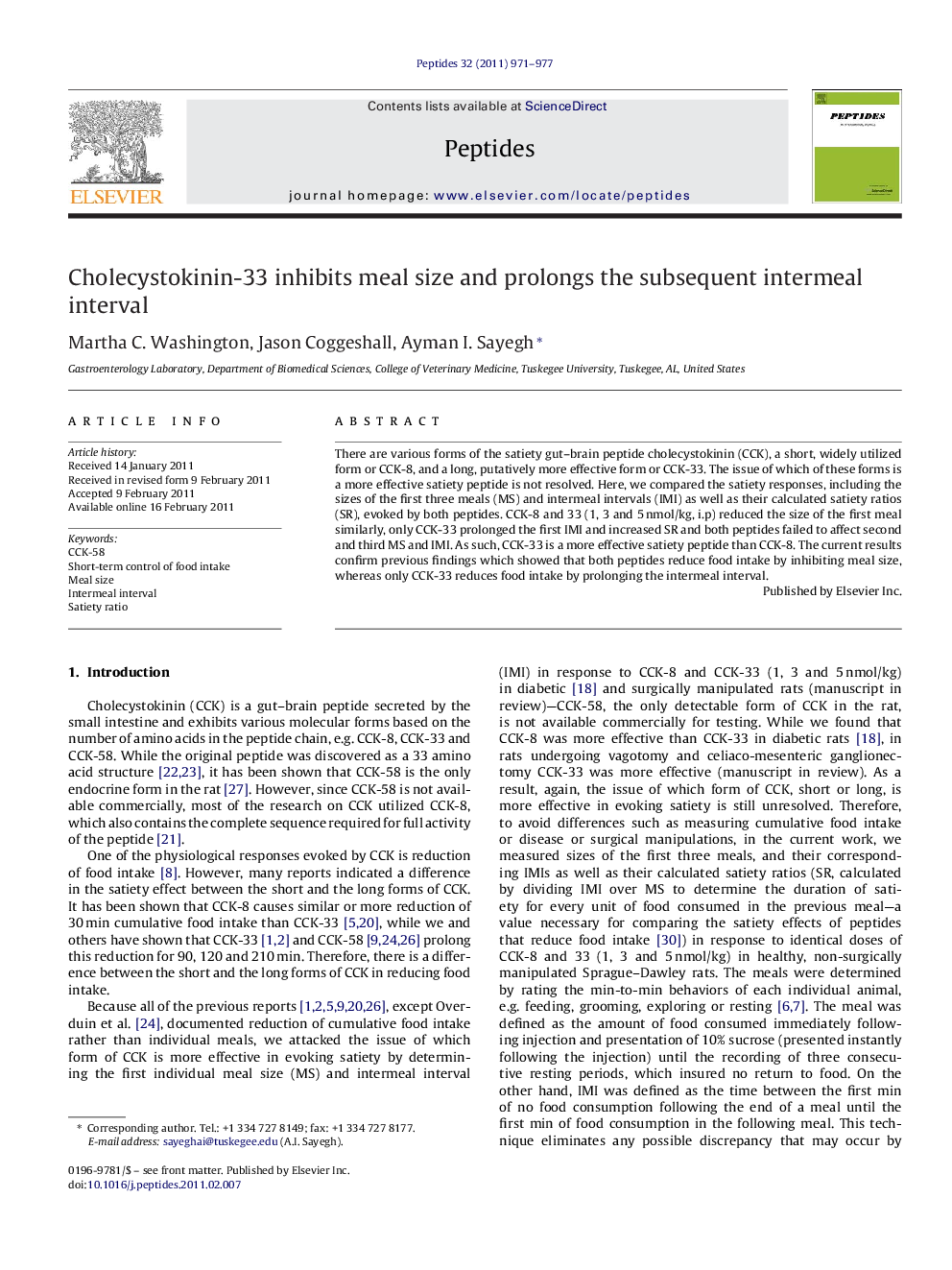| Article ID | Journal | Published Year | Pages | File Type |
|---|---|---|---|---|
| 2006548 | Peptides | 2011 | 7 Pages |
There are various forms of the satiety gut–brain peptide cholecystokinin (CCK), a short, widely utilized form or CCK-8, and a long, putatively more effective form or CCK-33. The issue of which of these forms is a more effective satiety peptide is not resolved. Here, we compared the satiety responses, including the sizes of the first three meals (MS) and intermeal intervals (IMI) as well as their calculated satiety ratios (SR), evoked by both peptides. CCK-8 and 33 (1, 3 and 5 nmol/kg, i.p) reduced the size of the first meal similarly, only CCK-33 prolonged the first IMI and increased SR and both peptides failed to affect second and third MS and IMI. As such, CCK-33 is a more effective satiety peptide than CCK-8. The current results confirm previous findings which showed that both peptides reduce food intake by inhibiting meal size, whereas only CCK-33 reduces food intake by prolonging the intermeal interval.
Research highlights► We measured the satiety responses of cholecystokinin (CCK)-8 and 33. ► CCK-8 and 33 reduced the size of the first meal (MS). ► CCK-33 prolonged the first intermeal interval (IMI). ► The calculated satiety ratio for CCK-33 was more than CCK-8. ► CCK-33 reduces food intake by altering MS and IMI, while CCK-8 alters MS.
